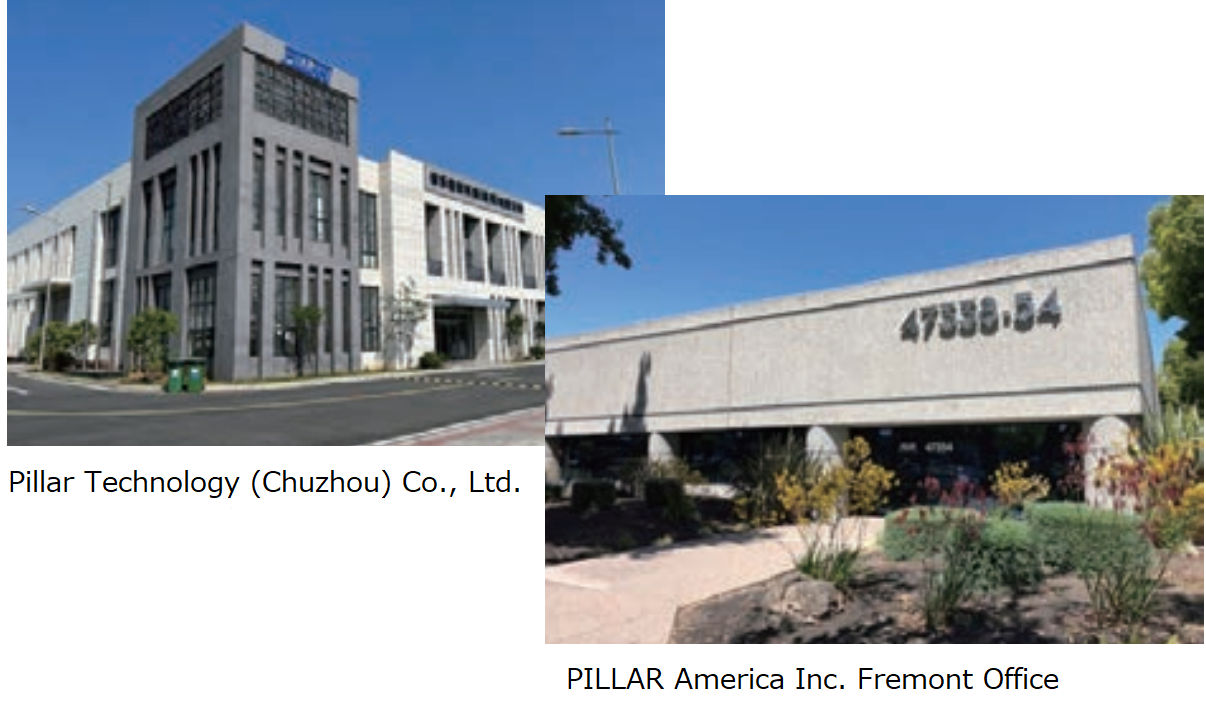Mother Factories that Underpin Our Business
- Strength1 A Mother Factory That Provides Fluid Control Technology
- Strength2 An Agile Global Production System That Responds Quickly to Emerging Market Trends
- Strength3 Advanced Production Facilities and Equipment
Our Group’s products are used as important functional components in a wide range of industrial fields, including semiconductors, electric power, petroleum and pharmaceuticals. Since the specifications differ depending on the application, optimal design and production are required for each product. Therefore, we secure the materials we need to manufacture internally what we require, and achieve higher quality products through in-house integrated production of all processes
Strength1 A Mother Factory That Provides Fluid Control Technology

As our main factory, the Sanda Factory plays the role of a mother factory. It is responsible for producing sealing products for the industrial equipment market. These products include mechanical seals, gland packings, and gaskets. The factory also incorporates a research and development department. In March 2020, the factory was reopened as a state-of-the-art factory following extensive renovation work intended to improve productivity through a rationalized layout; expanded automation and mechanization; and the introduction of IoT. As part of this renovation, efforts were made to improve the working environment and safety; to implement a business continuity plan; and to improve visitors’ sense of trust and security through the addition of a technology training center, analysis center, and showroom.
Strength2 An Agile Global Production System That Responds Quickly to
Emerging Market Trends


Expanding production facilities to meet shifting demand
In order to respond to the ongoing increase in demand for products in the
electronic equipment market, the Fukuchiyama Second Factory is
scheduled for completion in September 2023. The factory is intended to
increase production capacity by up to 80%; strengthen cost competitiveness
through the construction of a new production system; comply with
customers’ stringent quality requirements; and highlight our technology
through its open concept design. It features an expansion zone capable of
accommodating three more factories of the same size. We plan to use this
space to expand our production capacity with a flexible approach.
Moreover, this factory features an environment-friendly design, as it will
incorporate solar power generation and energy-efficient equipment.

Maintaining local production systems outside Japan
We are strengthening our facilities in the U.S.A. and China, where the market for
products in the electronic equipment business segment is expected to expand. In
the United States, we have set up a simple laboratory at our Fremont Office to
accommodate the development needs of semiconductor equipment manufacturers.
We also intend to expand the warehouse space to meet growing demand.
In China, Pillar Technology (Chuzhou) Co., Ltd. has adopted the model of local
production for local consumption in response to the demand for products for the
electronic equipment market. By increasing the number of items produced and
strengthening its production system, it is expanding its product lines as well as the
quantities produced.
Strength3 Advanced Production Facilities and Equipment

Promoting automation and the adoption of IoT
The Sanda Factory has introduced innovations such as
automated guided vehicles (AGVs), automated guided forklifts
(AGFs), radio frequency identification (RFID), and management
systems employing short-range wireless communication with
IC tags.
By utilizing these improvements, we aim not only to reduce
work loads but also to eliminate human error, reduce walking
distances, and improve productivity while minimizing lead
times through unmanned operation.

High-standard clean room
At the Fukuchiyama Factory, we have introduced a large-scale
industrial clean room, which is a space intended to minimize
airborne microparticles and microorganisms to a level of
cleanliness that attains a specific standard in order to prevent
contamination of surfaces with impurities and dust.
Even fine dust remaining on the surface of electronic
components presents a risk of malfunction. It is therefore
extremely important to eliminate dust and other fine particles
by employing high-performance filters and by eliminating static
electricity. We will continue to meet the future needs of the
market by equipping our facilities with clean rooms to meet the
highest standards.

A facility that enhances the peace of mind and
security of visitors
The technology training center at the Sanda Factory has prepared
training programs not only for our employees, but also for our sales
partners and partner companies. We have provided samples of
pumps, valves, and other machines that enable visitors to expand
their knowledge of our products through hands-on training while
learning how to incorporate them in their operations.
Our showroom is also available for customers who visit our
factory. Here, they can gain more detailed information about our
Company. We have also designed visual presentations for greater
ease of understanding. By introducing applications in which our
products are actually used as well as cutaway displays that clarify the
structure of our products, we are creating opportunities for greater
business development.


Safe and environment-friendly design
As a safety measure against earthquakes, we have adopted
seismic isolators of our own design at the new Sanda Factory,
Fukuchiyama Factory, and Kyushu Factory.
We are also working to obtain certification under the
Comprehensive Assessment System for Built Environment
Efficiency (CASBEE) for our environment-friendly designs. Both
the new Sanda Factory and the Sanda Innovation Center have
acquired CASBEE-A certification, while the Fukuchiyama
Second Factory has applied for CASBEE certification.
In addition to acquiring these CASBEE certifications, we are
adopting eco-friendly measures such as low-carbon enzymatic
construction material (ECM) concrete and cubicles
incorporating soybean oil.






